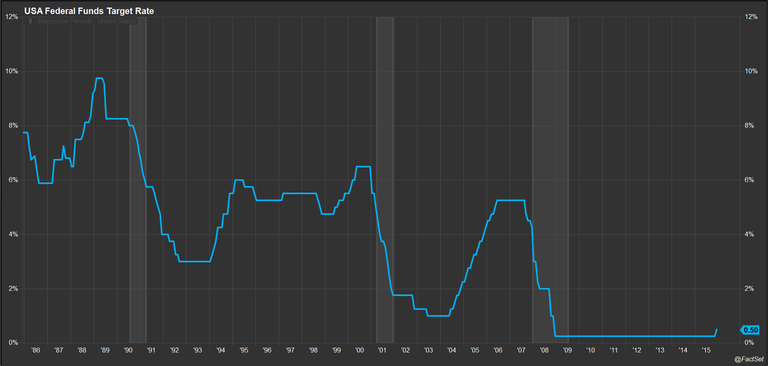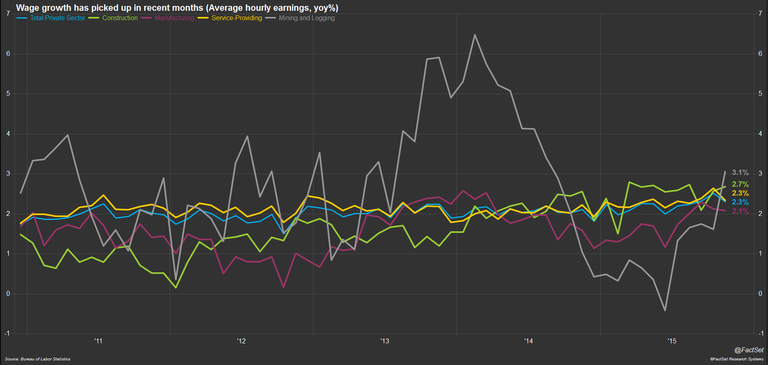This week the U.S. Federal Reserve’s Federal Open Market Committee (FOMC) raised interest rates for the first time since 2006. The 25 basis point increase in the Fed Funds rate target range to 0.25-0.50% was the first action by the FOMC in seven years. Over the summer there was widespread speculation that the FOMC would start raising rates at their September meeting, but the unexpected devaluation of the Chinese yuan in August delayed any action. The December cut had been broadly telegraphed by the Fed so the move did not come as a surprise to observers, but now the focus shifts to the pace of expected future rate hikes in 2016.

The FOMC statement this week acknowledged that inflation in the U.S. economy remains subdued, but reiterated several times that the Committee has a dual mandate: “to foster maximum employment and price stability.” This year’s steady improvement in labor market conditions appears to have been the main factor in the decision to raise rates. The overall unemployment rate has fallen to a seven-and-a-half-year low of 5.0% and the monthly rate of job additions has averaged 210,000 over the first 11 months of 2015, above the 200,000 level needed for sustained economic growth. More importantly, wage growth has picked up; hourly wages showed year-over-year growth of 2.5% in October and 2.3% in November, the largest consecutive monthly increases in six years.

With the exception of the mining and logging industry, which has been hit hard by low energy prices, the wage increases have been pretty broad-based in recent months. In November, hourly wages rose 2.7% for construction workers, 2.1% for manufacturing workers and 2.3% for private service employees from a year ago; even jobs in mining and logging saw a 3.1% jump in wages compared to last year’s weak numbers. The construction industry continues to see the strongest job growth and the largest wage increases as homebuilders feel the pinch of tight labor markets. In their Q4 2015 earnings call in November, the nation’s largest homebuilder, D.R. Horton (DHI-US), cited labor market constraints as an important factor in their business results and they expect this to continue into 2016.

In their statement, the FOMC stressed that they expect to see continued improvement in the labor market as well as inflation figures closer to their 2% target as we move into 2016 and 2017. The Committee stressed the word “gradual” with respect to future rate increases, and the December rate hike is largely seen as a necessary preemptive move to get back to a more normal interest rate environment in which the Fed has more flexibility in setting monetary policy. Analysts surveyed by FactSet concur with this steady approach, expecting the Fed Funds rate to end 2016 at 1.25% and to finish 2017 just above 2%.

